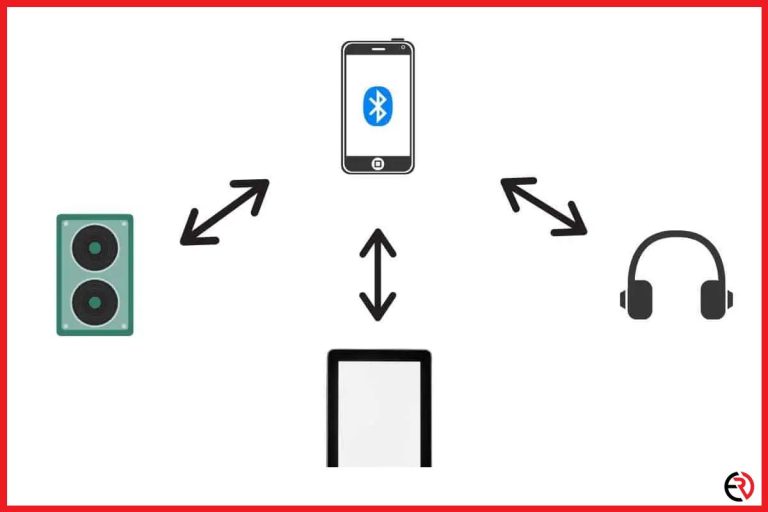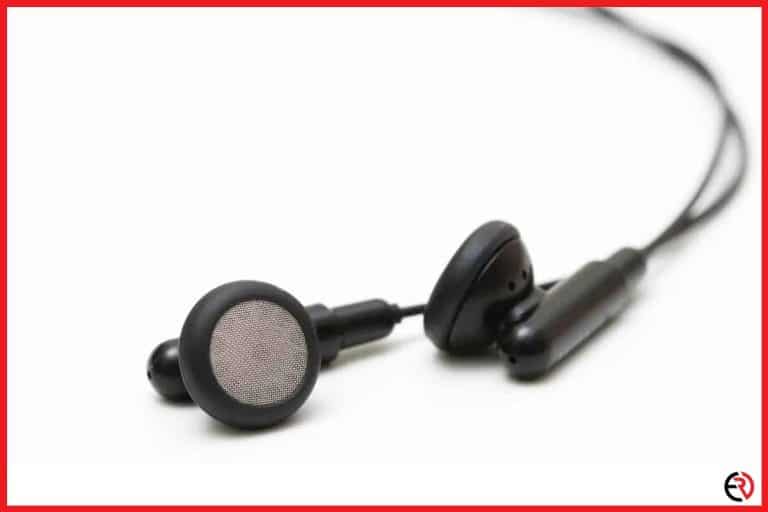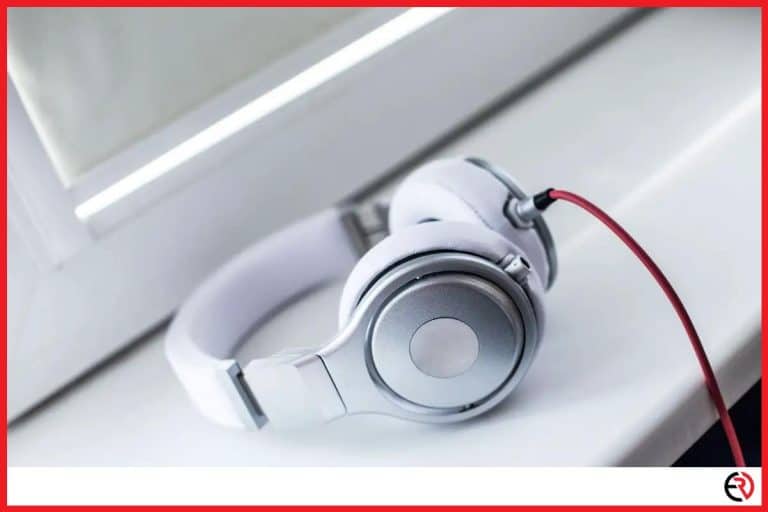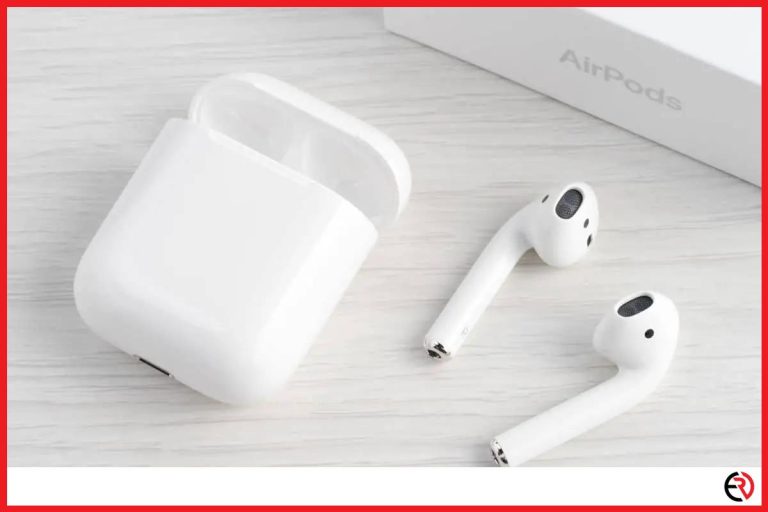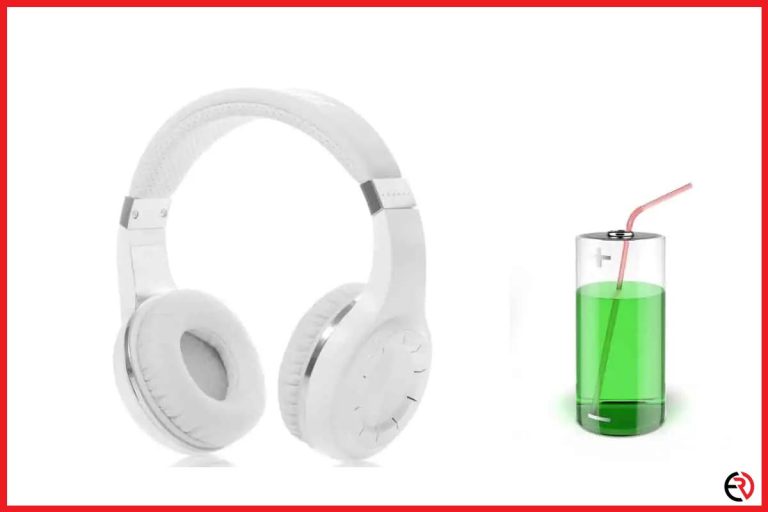Are Wireless Earbuds Worth It?
This post may contain affiliate links which means that, if you choose to make a purchase, I may earn a small commission at no extra cost to you.
If you haven’t purchased wireless earbuds, there must be some reasons you’ve decided to stick with the wired headphone or earbud you’ve got. You’ve heard a lot of things about the vast options available to wireless earbud users, but perhaps you’re still on the fence about whether you should invest in a pair.
Are wireless earbuds worth it? Yes, they are worth it, especially if you are into fitness or travel. The prices on wireless earbuds have come down a lot in recent years. The lack of wires provides for better range of motion, connectivity to a variety of devices and the latest wireless earbuds have great range, memory and battery life.
I’ve done the research to help you determine just why it’s worth it to purchase a set of wireless earbuds and how much they’ll come in handy. We’ll also talk about those times when you might prefer to “plug in”.
Who Benefits Most from Wireless Earbuds
Depending on who you are and what you do, you may get more out of wireless earbuds.
The Physically Active
Athletes and fitness enthusiasts move around a lot, so being able to wear wireless earbuds that don’t fling cords around is a huge advantage. Whether you are doing treadmill work, calisthenics or powerlifting, you don’t want anything holding you back and disrupting your performance.
Several wireless earbuds also have systems in them that track your fitness level, such as pulse rate, and heart rate, Apple and Bragi have lots of products that implement these systems.
Travelers
The sheer amount of comfort makes traveling much more convenient; wireless earbuds are much easier to pop in and take out while you are pulling your luggage around or going across the country on a flight, no more untangling messy cords and lining them up, so they don’t get caught on anything.
Why Wireless Earbuds Might Not Work for You
Do you lose things easily, such as your pen or keys? Wireless earbuds may cause a problem for you in this case, because they are so tiny you may misplace them if you forget to put them back into the charging case.
However, even this potential problem could be partially solved with the new special tracking system. Apple can help you track Airpods with Icloud or apps like “find my iPhone.” If your earbuds are misplaced, some companies even offer discounts for replacement pairs such as SOL Republic and Apple.
Making sure you have a fully charged case is a top priority with these wireless earbuds. If you don’t have the discipline to keep them charged, then you may find that you will have drained earbuds making them utterly useless until charged.
Advantages of Going Wireless
Here are some of the best advantages we could find for why you should switch to wireless earbuds instead of wired ones.
No Tangled Cables
One of the most obvious advantages that many people can see is that you don’t have to move around with wires hanging down everywhere. The freedom you will experience when switching from wired earbuds to wireless is unparalleled.
They’re Only Going to Get Better
When Bluetooth earbuds first came out, which seems like a long time ago, early earbuds had all sorts of problems:
- The pairing was very difficult
- Connections would drop out
- They were extremely expensive
- Playback sometimes didn’t work
- Audio quality sounded like it was in a tin can
Bluetooth has come a long way since then.
- Pairing is much easier; you can simply flip open your AirPod case or tap an NFC tag
- Bluetooth 5 is almost upon us, which will cover four times the throughput and cover twice the distance
- Prices are much more affordable. The pricing of older models has dipped because the new ones are just so good. Wired earbuds never seem to change prices
Battery Life Is Good
It may sound like a burden to need to charge your battery, but this sadly the case with all portable devices.
The bright side is that wireless earbuds batteries on average can last you up to 10 hours which is enough use to use them almost all day at the office, with some time at the gym or walking around your block.
Some pairs like the Bose Quiet Comfort 35 can get you 20 hours of use very easily since you can use it all day the only time you really need to charge it is at night.
There is an additional option as well, which lets you connect larger wireless headphones with a cable if the battery dies, so you can keep on listening. If you don’t even use your wireless earbuds that much, then you may only need to charge them once a week because the standby times don’t drain battery life very much.
Trusted Devices
For those who don’t know what these are, a “trusted” device is one you own or pair to a lot. They are basically devices that you “trust” that to be used to while your phone is unlocked. Anything with a Bluetooth or battery can make a trusted connection. Gadgets like smartwatches and fitness band work this way, and now you can do the same with wireless earbuds as well.
So, if you don’t have a smartwatch or fitness band, then you can keep your phone unlocked when it is in range of your wireless earbuds for convenience. This is especially nice if you are always wearing your earbuds or headphones on your ears or around your neck.
This is an exclusive feature of wireless earbuds because wired ones can’t broadcast anything unless they’re directly connected to it.
No More “Wrong-Size” Cables
With wired earbuds and headphones, there is a possibility that you can have the wrong adaptor that doesn’t fit your phone. Not so with wireless. You can connect anytime, no matter what size adaptor your devices use.
Wireless and Plugged-In: Why You Might Need Both
There are a lot of advantages that come with switching over to wireless earbuds, but ideally, you may want a pair of both. There are certain sound qualities that wired earbuds can provide because they are directly linked. The sound quality of wired will almost always beat out the wireless counterparts.
There are also situations where wireless outcompete wired, such as when you are active, and the wires would be a pain. Or when you need to keep your phone somewhere, that’s not on you but still, listen to the audio remotely.
Wireless earbuds are also arguably more comfortable and have better designs than wired ones. They can wrap comfortably around your ear, and not come close to falling out while you’re moving, unlike so many wired earbuds.
Types of Wireless Headphones
Wireless Earbuds
Wireless earbuds are Bluetooth earbuds or IEMs (in-ear monitors) that lack wires or cords that physically connect them to an audio source. This unique structure means that wireless earbuds have the controls, batteries, and mic built into the earbuds themselves.
Wireless In-Ear Headphones
These are very similar to wireless earbuds and also don’t physically connect to the audio source. But with wireless in-ear earbuds, there is a cable connecting the two earpieces that have volume controls, the mic, and the battery.
Bluetooth
The most common type of wireless earbud uses Bluetooth. Most electronic devices can enable Bluetooth which allows them to connect to each other very easily. They can connect to more devices than other earbuds. Bluetooth connections are made through direct pairings, which increases their safety as well.
They don’t need a line of sight, but their range is still fairly limited at only 33 feet. If the Bluetooth earbuds are of low quality, then you may have some sound problems.
Infrared
These types of wireless earbuds use infrared waves to send audio signals, much like a TV remote. The higher quality IR headphones can actually compete with the audio quality of wired earbuds. The sound is transmitted individually to the left and right pieces, which results in an immersive effect.
The downsides are that the range is very short, reaching up to 23 feet with the base units. Line of sight is needed so that there is no interference, with no obstruction IR will generate audio that has no radio interference or static.
Radio Frequency
The biggest advantage of using radiofrequency is the range. You can travel up to 300 feet away and experience no connectivity loss. Think of RF headphones like miniature radio stations where they can pick up audio, silent discos often make lots of use with these.
Bass capabilities are a big problem with RF earbuds. However, they have better sound quality than Bluetooth but the environment it’s set up in factors into the overall sound performance.
Kleer
The newest technology to come to the front is Kleer. Kleer technology is best known for its lossless transmission of sound and providing 16-bit CD-quality sound.
They also use very little battery and many last 3 to 4 times longer than Bluetooth headphones. Their distance isn’t quite as bad as Bluetooth and infrared reaching as far as 15 feet.
Many of the best wireless earbuds available use Kleer technology in their products.
Wireless vs. Wired – How They Compare
You wear headphones for one reason – to listen to something you really want to hear. So, let’s compare how wired and wireless compare when it comes to doing what you need them to do.
Sound Quality
Arguably one of the most important points in earbuds and headphones. Sound quality is determined through the way the audio is transmitted from the source to the headphones.
In wired headphones:
- There is an uninterrupted connection between the source and the headphones
- As long as your cable is intact, you’re going to have great sound
In wireless earbuds:
- The digital audio signal needs to be compressed at the source
- The compressed signal is transmitted to the earbuds (through Bluetooth, for instance.)
- Earbuds receive the transmission and convert the digital signal back to analog to play.
During this process, the wireless transmission and compression can cause difficulties in sound quality, specifically:
- The distance between the source and the earbuds
- The number of obstacles between the earbuds and the source
- Audio codecs in the Bluetooth that the source and earbuds support.
What is Bluetooth Audio Codec?
These are different types of algorithms that compress and decompress digital audio signals. LDAC, aptX HD, and aptX are codecs that can deliver sound quality that rivals CD quality. On the more average/medium side is AAC, SBC has the lowest quality of compression.
Why This Can Be an Issue
The audio source and the earbuds need to support the same audio codec for the algorithm to work as it’s advertised to work. Many mobile devices only support SBC and AAC.
So, as you can see, this is where wireless headphones have challenges that wired headphones don’t. But deciding on what you’ll use may depend on more than just one factor. Let’s look at some more.
Battery Life
Battery life is a very important aspect of wireless earbuds, and while the need for batteries at all is also a slight downside for having wireless compared to the benefits of being wireless.
Manufacturers find it very difficult to put big rechargeable batteries into the driver house; they have developed a workaround that involves putting the battery in a carry case and calling it a “charging case.”
On average, wireless earbuds will last about 3 hours of use, and then be drained completely. Charging cases, on the other hand, can give your earbuds almost double at 5-6 hours of audio listening.
This all depends on the model because some devices such as the Jabra Elite 65t guarantee up to 25 hours, while the Onkyo W800BT promises 15.
These are just examples because battery life depletion can vary depending on factors such as volume level; greater volumes will drain the battery more rapidly.
The Range of Wireless Earbuds
As discussed before, Bluetooth usually doesn’t pick up very far from its source, but there are actually various Bluetooth classes that run from 2.4 to 2.485 GHz that can increase the range quite drastically.
- Class 1 Bluetooth ranges up to 328 feet
- Class 2 Bluetooth ranges up to 33 feet
- Class 3 Bluetooth ranges less than 33 feet.
Just about all audio sources have class 2 Bluetooth installed, though class 1 is far better. To match, wireless manufacturers also developed class 2 Bluetooth supports.
Using Apple’s W1 chip, the Jabra Elite 65t, the Onkyo W800BT, the Sony WF-1000X, and the Beoplay E8 can range up to 100 feet, which is considered a class 1 device.
Range Alone Isn’t Everything
Be careful not to use range as the top priority among wireless earbuds. While the range may reach far away, it means the sound quality will lack.
To have good audio, you need to keep in mind the speed of transmission and just how much data needs to be transmitted. Wi-Fi is an example of a transmission technology that can accomplish better sound quality.
Comfort and Design
There’s no doubt that not having cords dangling around is a huge benefit of going wireless. We’ve all been startled by earplugs being yanked from our ears by a mistakenly tugged cord.
But there are other levels of comfort you should look at since your earbuds will probably be in your ears for long periods at a time.
In an effort to increase battery life, manufacturers will sometimes make the battery physically bigger in the housing, which will make it bulkier, uglier, and possibly less comfortable.
Ideally, comfortable wireless earbuds will:
- Be lightweight, so you don’t get fatigued
- Fit comfortably around the ear canals and won’t budge even while you’re moving
- Well placed buttons and controls
Bad wireless earbuds will
- Cause discomfort and pain
- Be heavy and bulky
Comfort is subjective, so it’s hard to say what’s comfortable for us will be comfortable for you.
But, generally, there will be lots of crossovers, so it wouldn’t hurt to run through some quick comfort points.
Noise Cancellation
Models such as Sony WF-1000X come with ANC (Active Noise Cancelling) and even have a “Smart Listening” mode which will let you enable ambient mode and switch out of ANC if you choose.
Sweatproof Earbuds
There are wireless earbuds made specifically for you fitness nuts, that can track your fitness and are sweatproof. Your gym sweat won’t affect the sound quality of your audio, and your earbuds don’t slide right out of your ears.
Other Considerations
Memory
Do you have an extensive playlist that needs massive space? Well, there are earbuds made exactly for you, DashPro and Bragi The Dash have huge memory stores that will allow you to bring your full song list.
Warranty
Wireless earbuds are fairly recent technological breakthroughs, and will no doubt have their fair share of glitches and hiccups from even the most high-quality products. Make sure you think twice about declining the warranty and return policy when you purchase.
If you know what you are doing, you can typically gauge the build quality of the earbuds after you try them on. However, if you are making an online purchase, make sure that you know the manufacturer’s return policy, and customer service well.
Price
Unfortunately, because they are so advanced, wireless earbuds will usually be pricier than their wired counterparts. Not only are they “luxury” products, but they cost a lot to produce.
Creating a device that puts out high-quality music in a package so small, it can fit in your ear comes at a cost. This is a big challenge to those creating, who then have to make it as cost-efficient as possible.
There are also cheaper brands and models if you are unwilling to spend a lot of money but still want decent wireless earbuds.
A Look at Some Wireless Options Out There
#1 Ankler Zolo Liberty
The Ankler ZOLO Liberty delivers an immersive sound with great clarity and treble. Your audio experience will have lots of deep bass and noise isolation. They are also sweat-proof, guaranteeing 3.5 hours of playback, and a charging case that holds enough life support for 24 hours.
This is a great device for people that are always moving because it has super-fast pairing and Anker offers a 12-month warranty for these earbuds.
#2 Motorola Stream
The Motorola Stream has great features at a reasonable price. It uses Bluetooth 4.1 and is IP54-certified which makes it water and dust resistant. This device also promises no dropouts; when you have a connection, it will stay locked in unless you move out of range.
These earbuds are compatible with Siri and Google Assistant. When looking at battery life, these earbuds can go up to 2 hours with one charge, and the case can last 6 hours. The sound quality is very deep and rich, with several built-in buttons that can perform functions to optimize your audio to your liking.
#3 Trelab X2
The Trelab contains a lot of features, especially for its low price. The speakers are made of Beryllium, and they produce ultra-high-definition 3D sound. It also has very advanced noise-canceling capabilities.
Controls are built into the earbuds with let you control many aspects on the go depending on your situation. Bluetooth 4.2 gives more stable signals, and the calling clarity is very clear and smooth.
Its sweat-proof and water-resistant certified by the IPX4 so you can be more focused during workouts and physical activities. The batteries in these earbuds last up to 5 hours, and the case lasts about the same.
However, arguably the best aspect of Trelab is the lifetime warranty, 30-day return, and you get your money back if you’re dissatisfied with the product.
#4 LiteXim Aerobuds
These earbuds are also a great choice for those that are active and are seeking adventure. THe LiteXim Aerobus has a great array of capabilities.
They guarantee no dropouts at all, and you can go up to 130 feet from your audio source. It’s able to isolate background noise if you need it eliminated to focus on something.
A unique technology that is implemented in these earbuds is Vivid bass technology that creates a highly immersive 3D sound experience. There are no multiple buttons with this model; there is only a single playback button which makes it very easy to use. The battery life is 4 hours with a 14-hour charging case
#5 Motorola VerveOnes
These special earbuds can stay active for 30 minutes in water as deep as 3 feet with an IP57 rating. Motorola is known for its wire-free earbuds having rich, deep HD audio that is compatible with Siri and Google.
A new feature they’ve implemented is TrueSync, which brings gapless sound. The battery can be used for 8 hours with the charging case.
#6 Tranya Sports
Wireless earbuds for about $50 that implements Bluetooth 5.0? Tranya is clearly trying to start a trend. Being able to use the latest Bluetooth versions makes these earbuds very powerful. The sound quality is impeccable, and the HD rendering produces super deep bass and clear treble.
The Tranya Sport can block out background noise, and they give stable, low latency, hypersensitive connection at up to 33 feet. Tranya has a 30-day return guarantee and a one-year warranty.
There are controls built in that let you answer or reject calls, play, skip, or pause music playback. Siri support is enabled, and the battery can last up to 4 hours with an extra 15 hours in the charging case.
#7 Airtome Mini
These wireless earbuds look like a twin of the AirPods. The Airtome Mini, which is currently under $50 has a very sleek design with all the capabilities you need in a wireless earbud.
It comes with sweat-proofing, Bluetooth 4.1, and noise-canceling abilities which allow for some very impressive bass and treble that ranges up to 3 feet. There are a 6-month warranty and a 30-day no-reason return agreement.
#8 PunkBuds Capsule
The PunkBuds capsule has one of the unique designs we’ve seen with tons of impressive functions built-in as well. They have a one-button control, a waterproof charging case that also acts as a speaker, and a microphone that can cancel noise in the background.
These earbuds use Bluetooth 4.1 and EDR Bluetooth to make pairing a breeze at up to 33 feet away. The battery lasts up to 7 hours of talking and 5 hours of playback; the charging case can charge the earbuds 10 times before it runs out of energy itself. Punk Buds also offer a lifetime warranty to their customers.
#9 ICEtek
A very simplistic design with easy to use functions. A one-button control is used on the earbuds that are powered by new TWS technology that enables instant syncing and pairing with audio sources up to 33 feet away.
The right and left earbud both have great noise-canceling abilities for calls. When listening to music, they have crisp depth and treble with great HD stereo sound. The battery lasts 2.5 hours, and the charging case can add 15 more hours.
#10 Focus Power F8
FocusPower has both Bluetooth 4.2 and IPX7 waterproofing. You can use these earbuds in the shower, lasting up to 4.5 hours for talking and music with an extra 13 hours in the charging case.
The earbuds can be charged to full in just 25 minutes. Siri is used for the control, which helps you connect each earpiece to two Bluetooth devices and connect each earpiece to the devices. FocusPOwer has a 3-month money-back policy and an 18-month manufacturer’s warranty.


